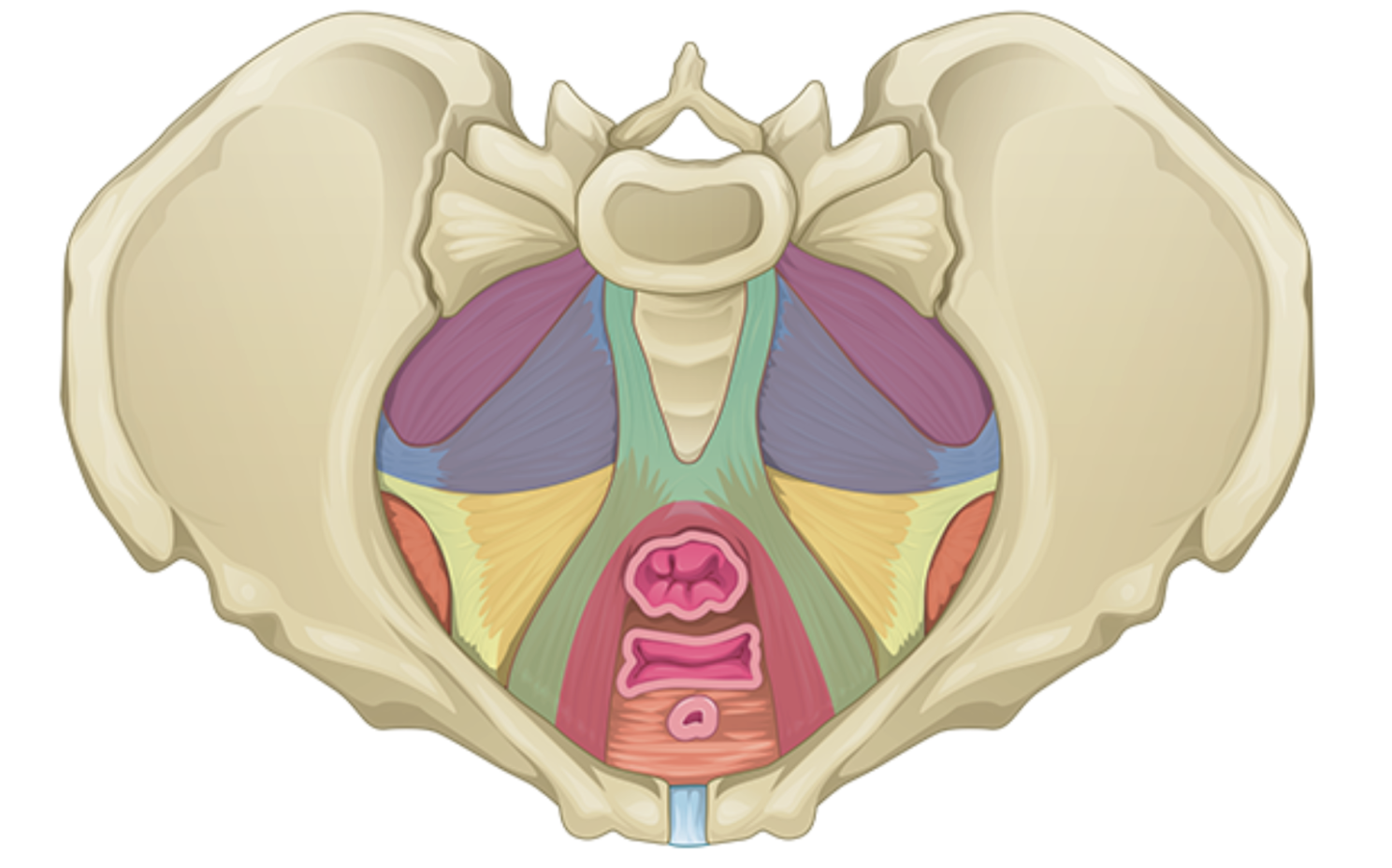What Is Pelvic Floor Physical Therapy?
Key Points
The pelvic floor is a group of muscles that support your pelvic organs, help control bladder and bowel function, contribute to core stability, and play a role in sexual health.
Pelvic floor physical therapy improves how these muscles work. That can mean strengthening, relaxing, or improving coordination to address issues like pain, leakage, or postpartum recovery.
In a therapy session, your therapist will ask about your symptoms, assess movement and muscle function, and create a customized treatment plan. An internal exam may be offered but is always your choice.
What Is Pelvic Floor Therapy?
Pelvic floor physical therapy is a specialty area that focuses on the rehabilitation of structures within the pelvic floor after an injury or dysfunction. Before we discuss what pelvic floor physical therapy is, you might be wondering what our pelvic floor is and what they do so let’s talk about it!
Where is the pelvic floor? Our pelvic floor muscles span from the front of our pubic bone to the back of our tailbone. They form this hammock-shaped structure that includes muscles, ligaments, and connective tissue that support and control our pelvic organs.
Image used with permission from Pelvic Guru®, LLC as a member of the Global Pelvic Health Alliance Membership (GPHAM)
What Does The Pelvic Floor Do?
Our pelvic floor muscles have five functions:
Organ support: the pelvic floor muscles support our bladder, uterus, rectum, and prostate against gravity and any changes within our abdomen that may occur when laughing, coughing, or sneezing.
Stability: the pelvic floor helps stabilize our pelvis and low back as it is considered one of our “deep core” muscles.
Sphincteric function: the pelvic floor muscles help control the opening and closing of our urethra and rectum where our urine, feces, and gas pass through. This function prevents any leakage, otherwise known as “incontinence”.
Sexual function: the pelvic floor musculature plays a role in orgasm or maintaining an erection.
Circulation: the pelvic floor muscles also work as a “sump pump” to help circulate blood back to our heart.
Pelvic Floor Physical Therapy
Pelvic floor physical therapy addresses impairments in the pelvic floor muscles to assist with their five functions. Different pelvic conditions pelvic floor physical therapy can treat include:
Bladder dysfunction: urinary frequency, urinary urgency, urinary incontinence
Bowel dysfunction: fecal incontinence, constipation
Pelvic pain
Sexual dysfunction
Pregnancy and postpartum care
Pelvic organ prolapse
In pelvic floor physical therapy, we can work on strengthening, relaxing/lengthening, and coordinating these muscles to work better together to optimize their function.
What To Do If You Need Pelvic Floor Therapy
Most people are nervous about coming in for pelvic floor physical therapy because it’s an intimate area. Let me share with you what to expect during your initial evaluation. Your therapist will start off by asking you questions regarding your symptoms to get a better idea of how your pelvic floor muscles are functioning. We could ask you a variety of questions spanning from urinary symptoms, bowel dysfunction, sexual function, general pain levels, and your medical history. After gathering this information, your therapist will perform an assessment that screens your movement, low back, hip, and pelvic floor. Your therapist will look at your overall range of motion and strength. Oftentimes, if something is going on within your low back and hip, it can affect your pelvic floor muscles and vice versa. To assess your pelvic floor muscles, this can be done externally or internally. This is the part some people may feel nervous about, but know that you are in charge of your treatment and your therapist is there to support you along the way. During the pelvic floor assessment, your therapist is looking for weakness, pain, muscle spasms, and any muscle coordination issues. At the end of your initial evaluation, your therapist will help generate a personalized treatment plan specific to your needs.
If you think you may benefit from pelvic floor physical therapy, feel free to book a consultation with us at Verro!
DISCLAIMER
The information in this post is for educational purposes only and should not be taken as medical advice. Every individual’s condition is unique, and pelvic floor concerns should be assessed by a licensed healthcare professional. If you’re experiencing pain, incontinence, or other pelvic symptoms, consult a qualified physical therapist or medical provider before beginning any new treatment.

